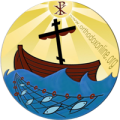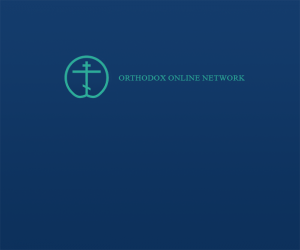The Nicene-Constantinople Creed:
- Faith: I believe.
- God the Father: In one God, Father, Almighty.
- Creation: Creator of heaven and earth, of all that is seen and unseen,
- Jesus ChristAnd in one Lord Jesus Christ, the only-begotten Son of God, begotten of the Father before all ages, Light from Light, true God from true God, begotten, not created, consubstantial with the Father, by whom all things were made, who for us men and for Our salvation came down from heaven,
- IncarnationHe was incarnated by the Holy Spirit and the Virgin Mary, and became man.
- RedemptionAnd he was crucified for us under Pontius Pilate, and suffered, and was buried, and rose again on the third day according to the scriptures, and ascended into heaven, and sits at the right hand of the Father.
- JudgmentAnd he will come with glory to judge the living and the dead, whose kingdom has no end.
- Holy SpiritAnd by the Holy Spirit, the Lord and giver of life, who proceeds from the Father,
- Holy TrinityWho is with the Father and the Son, worshiped and glorified, who spoke through the prophets,
- the church: And the Church of the one holy apostolic University,
- Baptism: And confess one baptism for the remission of sins,
- Resurrection on the last day:And I hope for the resurrection of the dead and the life of the age to come.
This constitution of faith was drawn up in stages according to the emergence of heresies and the need of the Church to defend its faith.
It was called the Nicene-Constantinople Council because part of it was drawn up in the First Ecumenical Council, which was held in the year 325 in Nicaea, and then completed in the Second Ecumenical Council, which was held in the 381st year in Constantinople.
Since the apostolic era, Christian worship has included public recognition of some elements of the faith, especially when preparing for and administering the sacrament of baptism.
In our Christian East, the Nicene-Constantinople Constitution of Faith entered the service of the Divine Liturgy as a major part of it in the fourth century, and took the lead in the essential discourse.
The Creed begins with the word “I believe” and not “we believe” to show the Christian people the value of the personal commitment of every member of the Church. Therefore, we must not recite the Constitution of Faith marginally and entrust it to anyone without our actual participation in it, as what is required of every believer, before participating in the Holy Communion, is to adopt the faith of the Church and to commit to it personally. “I believe.” This means that I, so-and-so present in this church, believe, that is, I adopt, not only with my lips, but with all my being, these words that the Fathers of the Church put forth and poured into them the revealed truth, making them, by doing so, accessible to every mind enlightened by faith in Jesus.
Metropolitan Philaretus, the Metropolitan of Moscow in the last century, said in this regard: “As long as your faith is preserved in the Holy Bible and in the Constitution of Faith, it belongs to God, His prophets, apostles, and the Fathers of the Church. It is not yours and you will not begin to acquire it until it takes over your thoughts and memory... “.
In order to reach such a state, we must strive to understand the truths expressed in the Constitution of Faith and allow them to penetrate us, so that the words that we repeat and hear in the Divine Mass affect us deeply and transform us into mature, conscious members of the Church of Christ.
This is what we aim to achieve in the book you have in your hands.
However, before diving into the book, it is necessary to make some observations that we consider important for a correct understanding of Christian doctrines and the Constitution of Faith:
Firstly: Reciting the Constitution of Faith is an integral part of the Divine Liturgy. It is an expression of the community’s acceptance of the divine word and its declaration of faith in this word, which they heard through the message and the Gospel in the first part of the Mass (the Mass of the Catechumens). It is also an affirmation of the community’s will to become one body by receiving the divine word in the sacrament of thanksgiving.
Therefore, reciting the Constitution of Faith is a liturgical act, a hymn of praise in ritual life.
The knot and praise are tied together with inextricable bonds: “Whoever prays is a theologian, and the theologian is the one who prays,” the fathers said in ancient times. Therefore, we cannot identify the truth inherent in a belief through purely rational analysis - the mind cannot limit divinity and its secrets. But we can do this through praise and meditation. With total hope in God’s mercy, He then reveals Himself to us and helps us understand the secret of His love. One of the fathers says: “The important thing is not that we talk about God and the truth of God. Rather, the most important thing is that we let ourselves be purified by God and filled with Him and His truth.”
The true theologian, in the Eastern concept, is a saint, because the saint has achieved his communion with God.
The pursuit of God is the foundation of the Christian religion. Studying the Creed is not a study of metaphysique, but rather a silent, loving and diligent pursuit filled with praise, a pursuit of the truth revealed by God and expressed in Christ Jesus His Son and given life to us in the Church by His Holy Spirit.
secondly: The Constitution of Faith confirms that the unity of the Church is, essentially, unity in faith, and the community that is strengthened by one faith expresses its faith collectively, which leads to preserving its unity and announcing it to the fullness.
Here it is worth noting that believers in the first three centuries did not need to express their faith through constitutions of faith. But the emergence of heresies pushed them to do so. Hilarius (fourth century) says: “The evil of heretics and blasphemers pushes us to say what is forbidden, as if we climb unreachable peaks, speak about unspeakable matters, and resort to forbidden interpretations. We had to be content with doing by faith alone what the Master commanded us to do: to prostrate to the Father, to honor the Son with Him, and to be filled with the Holy Spirit. Unfortunately, we are now forced to describe indescribable secrets. The sin of others causes us to fall into this sin: to expose secrets to the contradictions of the “shortcomings” of human language, while they were created to serve them in the stillness of our hearts.”
This means that the heretics’ distortion of the truth handed down to the Apostles forced the Church to put its beliefs into human forms, while being fully aware that words are completely incapable of containing the whole truth and expressing it completely.
This situation made Christian doctrines contain - apparently - countless contradictions. For example, we say that God is one and at the same time that He is a Trinity of Persons. We acknowledge that God is unapproachable and at the same time we call for a life of communion with God. We acknowledge that Christ is God and man at the same time. We say about the Church that it is visible and invisible, etc.
All these contradictions - on the surface - together express the truth. But combining them does not take place on the intellectual level, but rather on the level of spiritual experience, and this is the meaning of the mystery in Christianity. It is not a theory that is difficult to understand and comprehend, but it is a life that we are called to experience in one community of believers, by which I mean the Church. The more we experience the life of the church, the deeper we find it.
Third: Our unity in faith is attached to and inherent in love. This unity qualifies us to reach the true unity of life through our participation in Christ in the sacrament of thanksgiving.
This is clear in the Divine Mass, as the Constitution of Faith comes immediately after the priest calls on all believers to practice love, saying: “Let us love one another, so that with one resolve we may acknowledge the Father, the Son, and the Holy Spirit, a Trinity equal in essence and inseparable.” This means that the community of Christians united by love in the image of the Holy Trinity is alone qualified and called to proclaim the one faith.
True love is inseparable twins. There is no lived reality without and outside of love, and there is no true love outside of reality.
Fourthly: Finally, the personal commitment mentioned in the word “I believe” reminds us of the Constitution of Faith’s call for us to adhere to this divine plan whose events it lists and to change ourselves so that we become ambassadors for Christ and witnesses to Him in this world. Thus, the universal Church becomes a servant of the present world as it was its master, and this is evident in the sequence of the Divine Liturgy:
- Our unity in love qualifies us to express our one faith.
- Our expression of our united faith qualifies us to share in the one cup.
- Our participation in the one cup and the dwelling of Christ in our hearts qualifies us to search for Christ and serve him in all the places where he lives, that is, also in other people and in the world, thus confirming that the mystery of thanksgiving is not complete in its action in us unless it leads us to receive communion in “the mystery of our neighbor,” as St. John Dhahabi says. the mouth.

